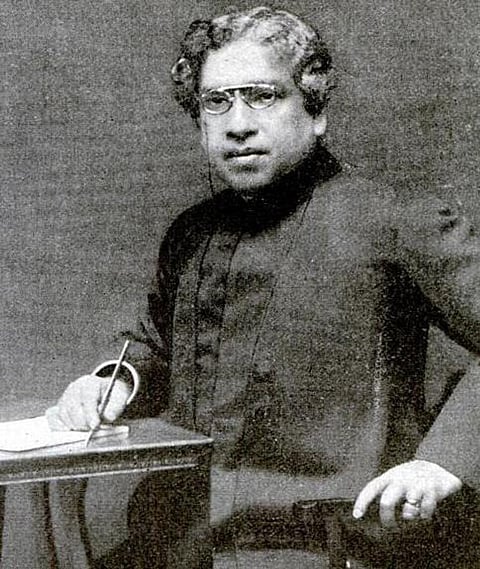
- Home
- न्यूजग्राम
- NewsGram USA
- India
- World
- Politics
- Entertainment
- Culture
- Lifestyle
- Economy
- Sports
- Sp. Coverage
- Misc.
- NewsGram Exclusive
- Jobs / Internships

Polymath, physicist, biologist, biophysicist, botanist, archaeologist and one of the earliest writers of science fiction- yes, this is one man. A man, who, according to Sir Nevill Mott, was 60 years ahead of his time. He did not believe in commercializing his work, he used to make it public. When he could have earned lifetimes for his generations, Jagadish Chandra Bose chose a way which led to further research.
He is the man who pioneered radio research and also, made some of the most significant contributions to the field of plant science. Bose is credited for laying down the foundation of experimental science in India.
You may also like: Mangalyaan Mission: A huge leap into space
Sir Jagadish Chandra Bose lived in British India's Bengal Presidency. His father was Deputy Magistrate in Faridpur. Even though from a rich family, he attended vernacular schooling because his father believed that children should know their mother-tongue before any other language.
The father of Bengali science fiction. Wikimedia Commons
It was a time when sending children to English schools was an aristocratic status symbol, that Bose studied in a vernacular school. He used to sit with the Muslim son of his father's attendant and the son of a fisherman. Even though his mother was an orthodox lady, she never practised discrimination. Bose never knew there existed a 'problem' (at that time) between Hindu and Muslim communities.
While speaking at the Bikrampur Conference in 1915, Bose said:
"They were my playmates. I listened spellbound to their stories of birds, animals and aquatic creatures. Perhaps these stories created in my mind a keen interest in investigating the workings of Nature."
He wanted to compete for the Indian Civil Services but his father told him "My son would rule nobody but himself." Bose also attended the University of London where he studied medicine, though he had to come back due to illness.
Later, he graduated with a BA from Kolkata University. While he taught physics at Presidency College, he was simultaneously pursuing his own research in electricity and electromagnetic waves.
Bose gave a demonstration of microwaves at Kolkata Town Hall, for the first time, in November 1984. He ignited gunpowder and rang a bell at a distance using microwaves.
His instruments are still on display. Wikimedia Commons
He developed a device which could detect radio waves, it was called a 'coherer'. The Englishman (18 January 1896) quoted from the Electrician and commented as follows:
"Should Professor Bose succeed in perfecting and patenting his 'Coherer', we may in time see the whole system of coast lighting throughout the navigable world revolutionised by a Bengali scientist working single handed in our Presidency College Laboratory."
Bose was unwilling to patent the device as he believed that science should be for the benefits of all, and should not be used for money-making. Later he did submit a patent application, under pressure from his friends, to the US patent office. He became the first Indian to get a patent.
Radio waves made him believe that physics is far beyond what the naked eye can see. Bose was curious about the world of plants. Hence, he switched to investigating how plants respond to stimuli.
A crescograph is an oscillating recorder using clockwork gears and a smoked glass plate to measure the growth and movements of plants in increments as small as 1/100,000 of an inch. The plate caught the reflection of the plant and it was marked according to the movement of the plant.
An image of a crescograph. Wikimedia Commons
Sir Jagadish Chandra Bose had a strong belief that plants have a sensitive nervous system. This belief was strengthened by his experiments. He was also astounded when he discovered that an electric death spasm occurs in plants when they die, this could be resourceful in accurately calculating the time the time of their death.
He revealed the wonders of the world of plants when he described his experiments and their results in his paper "Responses in Living and Non-Living".
The paper revealed that plants could feel pleasure and even pain.
Sir Jagadish Chandra Bose's place in history is prominent as ever. His work on microwaves has a major contribution to the development of radio communication. Instruments developed by him are on display and still can be used, after a century. A crater on the moon has been named after him.
